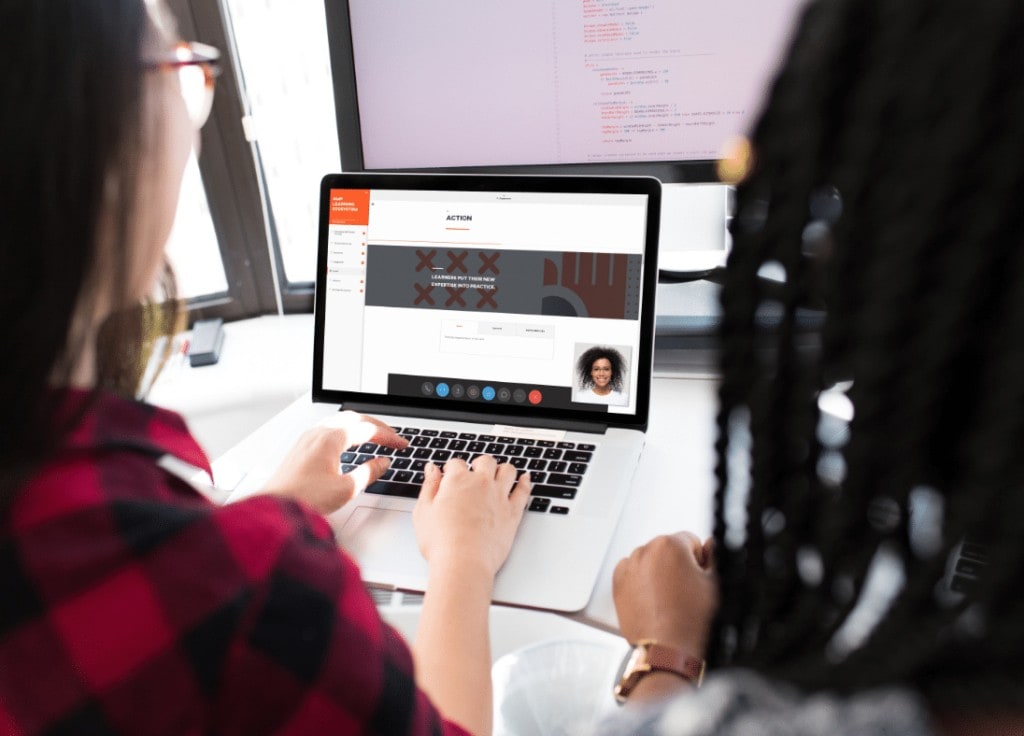With the challenges brought on during these times of social distancing, there is a dramatic increase in the demand for virtual training alternatives. This introduces the very real possibility of permanent change—virtual learning environments could become the new norm. It’s good to know virtual instructor led training (vILT) is rising to the challenge. vILTs can help you deliver classes that are enriching, engaging, and close to (or even better than) in-person training.
What are the most effective techniques for transforming in-person learning experiences into virtual experiences? At AMP Creative, we’ve created successful vILTs for clients. We’d like to share a few best practices—hard-won from our experience designing vILTs—so you can make the most of this medium and build an effective vILT.

Choose Essential Content
By their nature, vILTs tend to be shorter in duration than traditional ILTs. You’ll want to focus on the elements that are most crucial for the learning experience:
- Learner activities
- Speaking points
- Videos
- Handouts
- etc.
Work with your design team to determine what features make your vILT impactful.
Foster Learner Engagement
Pick the Right Platform
If your organization allows you the flexibility, choose a vILT platform that fits your content. Determine what tools (polling, breakout sessions, white boarding, or others) will best help you convey your content and find a platform that offers them. Check out this survey of the best platforms out there for a chart of features.
Often, your company has already selected a preferred platform. If that’s the case, you’ll need to leverage the engagement tools and elements native to your platform as you create your vILT. To extend the tools available to you, assemble a “learning technology stack” that adds other platforms—like Mentimenter and MURAL—to your vILT platform.
Match Your Class Size to Your Content
While vILTs are theoretically infinitely scalable, the type of engagement dictates the scalability of the class. Just like in the ILT world, certain types of interaction are strengthened with smaller class sizes and others allow classes to be successfully scaled. Does most of the learning happen in breakout rooms? If so, the number of breakout rooms your platform can handle may dictate the class size. Is facilitated discussion an essential aspect of the learning? If so, you might need a smaller class size. Try some trial runs with different class sizes to see what works best for your vILT.
Engage with Your Learners
Design experiences that focus on interaction and engagement with the content. Even more than with in-person sessions, keeping classes engaged in the virtual environment is essential. Consider this: you are competing with every work application, channel, and entertainment app on the very machine that your workshop is on! Best practice is to avoid going more than 3 minutes without an engagement action that involves your learner. Mix it up—even more than you might be used to.
Schedule frequent breaks
Sitting in front of a screen for hours creates the danger of burnout. To avoid it, we recommend 10-minute breaks every hour or so. Giving your learners a chance to step away from the screen can help them to process information and keep them from mentally checking out. Remember they may be in front of their screens all day long, even when they are not in the training session.
Build a Great Team
Work with Digital-savvy Facilitators
For vILTs, you need more than a facilitator who can synthesize and understand the content. You need a facilitator who understands the platform and feels at ease with this new medium. Most good in-person facilitators can make the transition, but don’t expect it to happen automatically. Give them plenty of opportunity for rehearsal and, if time allows, run multiple pilots to allow them to get their digital feet under them.
Add Support Roles
Establish a producer or technical director role. This person works alongside the facilitator, making the experience more seamless for both the facilitator and the learners. They enable and control the digital environment, making sure learners can communicate effectively. That means muting and unmuting mics, setting up or clearing whiteboards, posting polls, and more. This person can also be responsible for keeping the class on schedule and managing the flow of the session. A facilitator alone is often not sufficient to run a successful vILT with so many moving parts.
Design a Clear Process & Prepare for Success

Guide Your Team
Create a content and interaction guide that walks your facilitators and producers through the whole session. Think of it as a “run of show” if you are familiar with theater or live event production. Having an outline is also helpful to make sure all points are addressed, all interactions are performed, and time is kept.
Guide Your Learners
Create a learner guide to orient the learners to the vILT platform and send it out before the session. This will ensure that participants won’t feel lost, especially if the platform is new to them.
Make Materials Constantly Available
Give your learners class materials ahead of time. If there are any worksheets or materials learners might need, send them before the session. Then, make sure there is a way they can access the materials during the session, too. Test and retest all the links!
Demonstrate the Tech
Include a demonstration of functionality at the start of the session to confirm that participants can use all your vILT platform’s features. Ask them to all raise their hands or answer a question in a survey. This ensures you don’t leave anyone behind because of technical difficulties—and it’s a great opportunity to get to know the learners.
Other Considerations for Creating an Effective vILT
- What materials will you need to send out before the session?
- Is there a way to keep time or manage content?
- Will you be compressing the content to fit the format? If so, you must prioritize, prioritize, prioritize. Editing often makes content stronger, so think of this as an opportunity for improvement rather than simply an exercise in reduction.
- If repurposing or converting an existing ILT program, you may want to include a review session with your SME(s). Check with them to make sure key content travels intact to the vILT.
There is a lot that goes into creating a class, whether in-person or virtual. AMP has curated virtual classes in a way that is both effective in content and engagement. We hope these tips can help you kick-start your vILTs!
Need a hand? Our experts can help you transform your in-person training to engaging, scalable vILTs. Learn more about our vILT process or contact us today to get started.
















